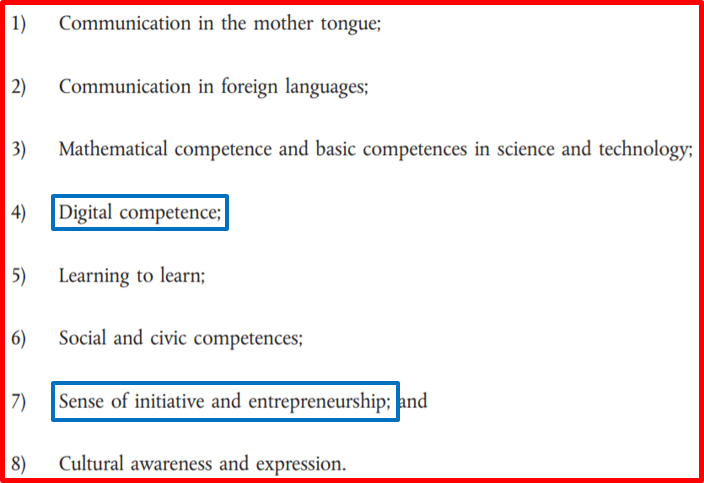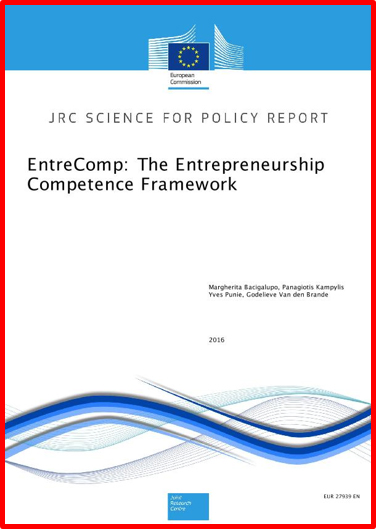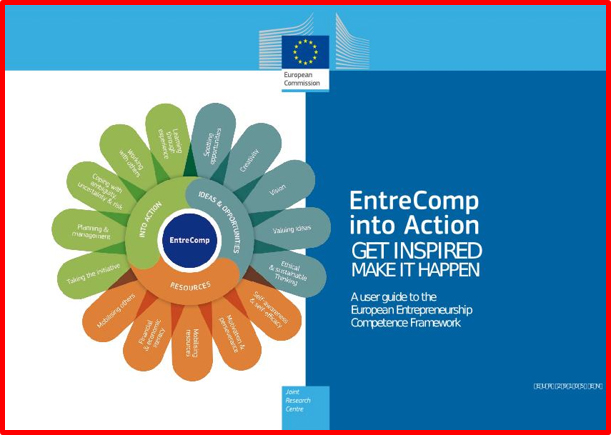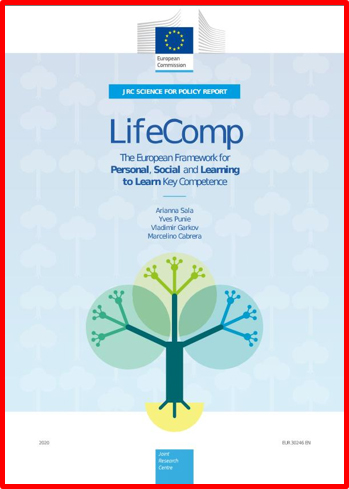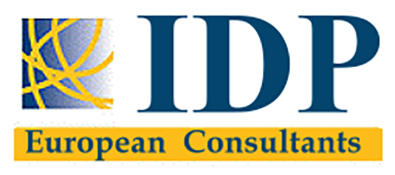
| |||||||||||||||||||||||||||||||||||||||||||||||||||||||||||||||||||||||||||||||||||||||||||||||||||||||||||||||||||||||||||||||||||||||||||||||||||||||||||||||||||||||||||||||||||||||||||||||||||||||||||||||||||||||||||||||||||||||||||||||||||||||||||||||||||||||||||||||||||||||||||||||||||||||||||||||||||||||||||||||||||||||||||||||||||
|
Background and Introduction Where do these framework stem from?Click to read
 To understand better the ratio behind this two framework, we have to go back to 2006.
Key competences for lifelong learningClick to read
 The aforementioned document is of pivotal importance for all Member States as it provides for specific recommendations on: • Key competences leading people’s empowerment in knowledge driven economics and societies • Assuring the long-term impact and sustainability of education and training curricula at national level at both formal and non-formal (i.e., access to education and training opportunities for all people, youth and seniors)
• A common education and training reference model* widespread at EU level
Let’s keep in mind this one for later… Digital Competences & Sense of initiative and EntrepreneurshipClick to read

…so what about this reference models? It is mentioned that one of the objective of this recommendation is to: […] provide a European level reference tool for policy makers, education providers, employers, and learners themselves to facilitate national and European level efforts towards commonly agreed objectives. These words put the seeds for both DigComp and EntreComp.
What is EntreComp The Entrepreneurship Competence FrameworkClick to read

EntreComp’ s design and structureClick to read
 In other words, the EntreComp tells you which are the key competences that you should focus on to nurture your entrepreneurial spirits and upskill your entrepreneurial attitudes. EntreComp is designed following a sort of onion structure:
The 15 EntreComp’s competencesClick to read

To each of this competences, EntreComp’s users should apply the 8-layer proficiency model included into the framework – a self-assessment tool designed to help users in evaluating their progresses in the acquisition of (new) entrepreneurial competences.
The 8-layer proficiency model – a general outline Click to read

What can you do with EntreCompClick to read
 • You can rely on the EntreComp to look into the training areas of interest identified by professionals and experts as instrumental to strengthen your entrepreneurial senses.
• The EntreComp provides for clear guidance on what should be the road map of your capacity building.
• At the same time, the proficiency model supports you in assessing and evaluation how your performance and education is going
A deeper look into EntreComp A detailed breakdown of EntreComp – competences and sub-competencesClick to read

IDEAS & OPPORTUNITIESClick to read

1.1 Spotting opportunities: sub competences 1. IDENTIFY, CREATE and SEIZE OPPORTUNITIES
2. FOCUS ON CHALLENGES
3. UNCOVER NEEDS
4. ANALYZE THE CONTEXT
Page 179 and 180 of EntreComp into Action for the full proficiency model for each of the thread
1.2 Creativity: sub competences 1. BE CURIOUS & OPEN
2. DEVELOP IDEAS
3. DEFINE PROBLEMS
4. DESIGN VALUE
5. BE INNOVATIVE
Page 181 and 182 of EntreComp into Action for the full proficiency model for each of the thread
1.3 Vision: sub competences 1. IMAGINE
2. THINK STRATEGICALLY
3. GUIDE ACTION
Page 183 of EntreComp into Action for the full proficiency model for each of the thread
1.4 Valuing ideas: sub competences 1. RECOGNISE THE VALUE OF IDEAS
2. SHARE & PROTECT IDEAS
Page 184 of EntreComp into Action for the full proficiency model for each of the thread
1.5 Ethical and Sustainable thinking: sub competences 1.BEHAVE ETHICALLY
2.THINKING SUSTAINABLY
3.ASSESS IMPACT
4.BE ACCOUNTABLE
Page 185 and 186 of EntreComp into Action for the full proficiency model for each of the thread
RESOURCESClick to read

2.1 Self-awareness and self-efficacy: sub competences 1.FOLLOW YOUR ASPIRATIONS
2.IDENTIFY YOUR STRENGHTS AND WEAKNESSES
3.BELIVE IN YOUR ABILITIES
4.SHAPE YOUR FUTURE
Page 187 and 188 of EntreComp into Action for the full proficiency model for each of the thread
2.2 Motivation and perseverance: sub competences 1.STAY DRIVEN
2.BE DETERMINED
3.FOCUS ON WHAT KEEPS YOU MOTIVATED
4.BE RESILIENT
5.DON’T GIVE UP
Page 189 and 190 of EntreComp into Action for the full proficiency model for each of the thread
2.3 Mobilizing resources: sub competences 1.MANAGE RESOURCES (MATERIAL & NON MATERIAL)
2.USE RESOURCES RESPONSIBLY
3.MAKE THE MOST OF YOUR TIME
4.GET SUPPORT
Page 191 and 192 of EntreComp into Action for the full proficiency model for each of the thread
2.4 Financial and economic literacy: sub competences 1.UNDERSTAND ECONOMIC & FINANCIAL CONCEPTS
2.BUDGET
3.FIND FUNDING
4.UNDERSTAND TAXATION
Page 193 and 194 of EntreComp into Action for the full proficiency model for each of the thread
2.5 Mobilizing others: sub competences 1.INSPIRE AND GET INSPIRED
2.PERSUADE
3.COMMUNICATE EFFECTIVELY
4.USE MEDIA EFFECTIVELY
Page 195 and 196 of EntreComp into Action for the full proficiency model for each of the thread
INTO ACTIONClick to read

3.1 Taking the initiative: sub competences 1.TAKE RESPONSIBILITY
2.WORK INDIPENDENTLY
3.TAKE ACTION
Page 197 of EntreComp into Action for the full proficiency model for each of the thread
3.2 Planning and Management: sub competences 1.DEFINE GOALS
2.PLAN & ORGANISE
3.DEVELOP SUSTAINABLE BUSINESS PLANS
4.DEFINE PRIORITIES
5.MONITOR YOUR PROGRESS
6.BE FLEXIBLE AND ADAPTABLE TO CHANGES
Page 198 and 199 of EntreComp into Action for the full proficiency model for each of the thread
3.3 Copying with ambiguity, uncertainty and risk: sub competences 1.COPE WITH UNCERTAINTY AND AMBIGUITY
2.CALCULATE RISK
3.MANAGE RISK
Page 200 of EntreComp into Action for the full proficiency model for each of the thread
3.4 Working with others: sub competences 1.ACCEPT DIVERSITY (PEOPLE’S DIFFERENCES)
2.DEVELOP EMOTIONAL INTELLIGENCE
3.LISTEN ACTIVELY
4.TEAM UP
5.WORK TOGETHER
6.EXPAND YOUR NETWORK
Page 201 and 202 of EntreComp into Action for the full proficiency model for each of the thread
3.5 Learning through experience: sub competences
The DigComp Framework Brief timeline of DigComp Click to read
 The 2006’s Council and EU Parliament recommendation includes digital competences among the new lifelong learning skills for the new decades. According to the proposal…
2013: first edition of DigComp – the DigComp 2.0 2017: revised edition of DigComp – the DigComp 2.1 2017: edition of DigComp for teachers and educators – the DigCompEdu 2018: follow-up with good practices in education settings – DigComp into Action 2020: follow-up with good practices in private sector settings – DigComp at Work 2022: revised edition of DigComp – the DigComp 2.2 (work in progress) DigComp: scale and scopeClick to read

DigComp: content and structureClick to read
 As with the EntreComp, the DigComp is conceived starting from a similar “onion structure” design. In total there are 5 so defined competence areas… 1.Information and data literacy
2.Communication and collaboration
3.Digital content creation
4.Safety
5. Problem solving
…for a full list of 21 competences
A comment: Not all of the aforementioned are “urgently” relevant for you at this stage of your entrepreneurial initiative. As a suggestion, we might recommend you to look into Pillars no.1 and no.2 as the competence underlined by them represented the very firsts essentials to gather basic IT and digital skills for e-entrepreneurship.
The proficiency model proposed by DigComp
| |||||||||||||||||||||||||||||||||||||||||||||||||||||||||||||||||||||||||||||||||||||||||||||||||||||||||||||||||||||||||||||||||||||||||||||||||||||||||||||||||||||||||||||||||||||||||||||||||||||||||||||||||||||||||||||||||||||||||||||||||||||||||||||||||||||||||||||||||||||||||||||||||||||||||||||||||||||||||||||||||||||||||||||||||||
Test Yourself! 
Description:
The EntreComp and DigComp frameworks represents two highly reliable reference models to help targets and readers in understanding what competences and training areas they should focus on to acquire (at least basic) skills for digital entrepreneurship.
We proposed an in-depth introduction to both frameworks, in their outline and content, so as to better facilitate your understanding of how competences are conceived, designed and arranged.
Keywords
Entrepreneurship, Digital Entrepreneurship, Digital Skills, EntreComp, DigComp, Competences
Objectives:
In the context of this training module, you will be introduced to two official European frameworks for education and training:
• One on entrepreneurial competences and sense of initiative (EntreComp)
• …the other on digital competences for all citizens (DigComp 2.1)
These two frameworks will help you in outlining a precise roadmap for your empowerment, upskilling and ultimate development of digital entrepreneurship competences.
Practical Tips
Feel free to look into EntreComp and DigComp as two concrete roadmaps for your capacity building and upskilling. Rather than wasting time trying to identify your strengths and weaknesses, focus instead on those competences that both frameworks identify instrumental for digital entrepreneurship.
Bibliography
 EN
EN IS
IS IT
IT ES
ES Play Audio
Play Audio 




